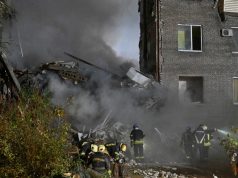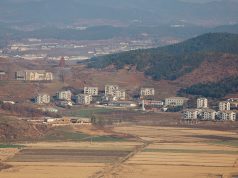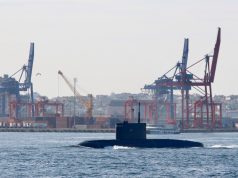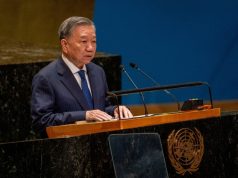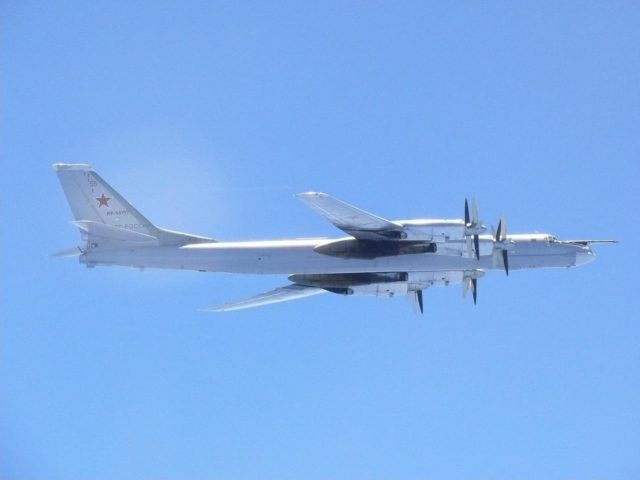
MOSCOW — Russian nuclear-capable strategic bombers have flown a rare mission around the Korean Peninsula at the same time as the United States and South Korea conduct joint military exercises that have infuriated Pyongyang.
Russia, which has said it is strongly against any unilateral U.S. military action on the peninsula, said Tupolev-95MS bombers, code named “Bears” by NATO, had flown over the Pacific Ocean, the Sea of Japan, the Yellow Sea and the East China Sea, prompting Japan and Seoul to scramble jets to escort them.
The flight, which also included planes with advanced intelligence gathering capabilities, was over international waters and was announced by the Russian Defense Ministry on the same day as Moscow complained about the U.S.-South Korean war games.
“The US and South Korea holding yet more large-scale military and naval exercises does not help reduce tensions on the Korean Peninsula,” Maria Zakharova, a spokeswoman for the foreign ministry, told a news briefing in Moscow.
“We urge all sides to exercise maximum caution. Given the arms build-up in the region, any rash move or even an unintended incident could spark a military conflict.”
The United States and South Korea began the long-planned joint military exercises on Monday, heightening tensions with Pyongyang which called the drills a “reckless” step towards nuclear conflict.
Some military experts regard the hulking Russian turboprop bombers which made the flight near the Korean Peninsula as a relic of the Cold War. But Russia has upgraded the aircraft since the Soviet fall and, since 2007, has used the planes to back its diplomacy with shows of force and to probe other countries’ airspaces.
Moscow said the bombers had been accompanied by Sukhoi-35S fighter jets and A-50 early warning and control aircraft.
The A-50s, the Russian equivalent of the Boeing E-3 Sentry AWACS aircraft, are designed to track aerial and ground targets at a long range, among other capabilities.
Tensions
Moscow did not say how many aircraft had taken part or when the mission had taken place.
“Our long-range aviation pilots, according to an established plan, regularly carry out flights over neutral waters over the Atlantic, the Arctic, the Black Sea and the Pacific Ocean from their bases and from tactical airfields,” the defense ministry said in the same statement.
It said the TU-95MS bombers were refueled in mid-air during the mission, and that during parts of the route they had been escorted by South Korean and Japanese military jets.
Russia, which shares a border with North Korea, has repeatedly voiced concerns about rising tensions on the Korean Peninsula caused by Pyongyang’s nuclear missile program, and has also complained about possible plans by Japan to deploy a U.S. anti-missile system on its soil.
Foreign Ministry Spokeswoman Zakharova said on Thursday that if Tokyo did go ahead and opt to deploy such a system it would be disproportional to the North Korean missile threat and could upset wider strategic stability in the region.
Japan has at least twice before this year been forced to scramble its jets to intercept Russian aircraft.
The daily Izvestia newspaper reported in October last year that Russia was close to finishing setting up a new division of heavy bombers to patrol “the Japan-Guam-Hawaiian Islands triangle.”




